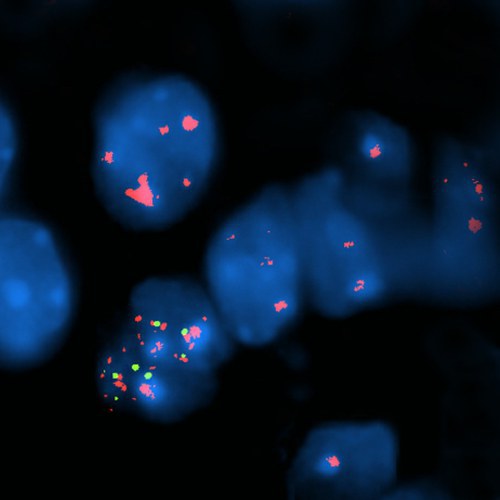Evaluation of stem cells as potential agents in the recovery of acoustic and olfactory sensory epithelia after permanent damage from toxicants and pollutants

In this research line we investigated, using a xenotransplant model, whether human adult mesenchymal stem cells (MSC) isolated from bone marrow (BM.MSC) and adipose tissues (ADSC), may engraft the olfactory mucosa or cochlea and contribute to restoration of neuro-olfactory or inner ear epithelium previously irreversible damaged by chemical agents.
Olfaction is essential to most animals, in order to mediate numerous behavioural repertoires such as food search, intra and inter-specific interactions, and reproduction. The initial event in primary odorant recognition occurs at the level of the olfactory neuroepithelium, whereas processing the sensory information occurs in the olfactory bulb and higher cortical centres. The olfactory epithelium is a pseudostratified epithelium and is located in the nasal cavities, which open out directly to the external environment in both land and aquatic vertebrates. Because of their relatively unprotected position, the olfactory sensory neurons can be easily damaged by physical injury, by exposure to inhaled environmental pollutants and viruses, and are a known-entry route into the brain for pathogens and chemicals.
Deafness is a sensory disability that affects millions of people worldwide. In mammals, deafness is frequently a consequence of various traumas, ototoxic drugs, loud noise or ageing. It has been considered permanent because in the organ of Corti in the mammalian cochlea the two sensory cell types (the hair cells and their associated auditory neurons) are only produced during the foetal stages.
In recent years, stem cell transplantation has received considerable attention owing to its potential application in neurological disorder therapies. Different stem cell types, from various sources, have been studied for their effectiveness in neural replacement strategies, including: embryonic stem cells; neural stem cells from fetal or adult brain regions, in particular those from the sub-ventricular zone or dentate gyrus of the hippocampus; induced pluripotent stem cells; a range of non-neural stem cells comprising of mesenchimal stem cells (MSCs). Bone marrow has for years represented the main source of MSCs in research and therapeutic studies. Nowadays multipotent stem cells from more accessible sources, such as adipose tissue, have attracted great interest because of their advantages. Adipose derived stem cells (ADSCs) express the same surface markers of MSCs, but their cell proliferation rate is higher than that of bone marrow-derived MSCs. Moreover, they can be isolated by a less invasive method and in larger quantities compared with bone marrow derived MSCs.
This research line focused on the regenerative potential of human adult MSC isolated from bone marrow and adipose tissues. Both are employed with the aim of determining whether exogenous stem cells, migrating in vivo and homing into acute lesioned olfactory epithelium or acoustic deafened cochlea, might provide conditions that contribute to re-organising the sensory epithelia, which would lead to the resumption of the original phenotype, providing a novel stem cell therapy model for damaged tissue and disease management.
Collaborations
- Simone Martini
Dipartimento di Neuroscienze Università di Padova e Laboratorio di Ricerca Bioacustica, Campus Biomedico P. d’Abano, Padova
- Laura Astolfi
Dipartimento di Neuroscienze Università di Padovae Laboratorio di Ricerca Bioacustica, Campus Biomedico P. d’Abano, Padova
- Edi Simoni
Laboratorio di Ricerca Bioacustica, Campus Biomedico P. d’Abano, Padova